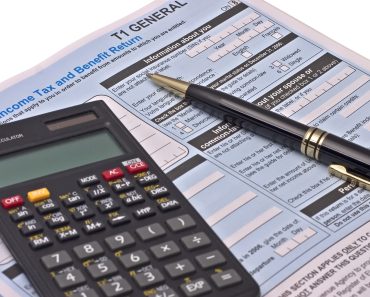 Did you know Canadian personal taxable rates can reach up to 33% depending upon your income? Many of you might not find that statistic surprising.
Did you know Canadian personal taxable rates can reach up to 33% depending upon your income? Many of you might not find that statistic surprising.
You know the crushing sensation of seeing your gross income, knowing your net income won’t be the same. The feeling isn’t new, but filing taxes in Canada can still be stressful and frustrating.
You don’t have to be tax experts to keep your money in your pocket. There are plenty of tax tips you may not have known to help reduce how much you pay in taxes yearly.
Here’s some useful tax advice from real tax experts to help you save money. Keep reading to learn more!
Consider a Registered Retirement Savings Plan
A registered retirement savings plan (or RRSP) is a retirement and investment savings account for Canadian employees and self-employed workers.
RRSPs aren’t mandatory, but the Canadian government encourages workers to consider creating one. RRSPs allow citizens to set aside enough money that they don’t need to rely on the following:
- Old Age Security
- Canada Pension Plan
- Québec Pension Plan
RRSPs give people financial flexibility, security, and a higher standard of living after retirement. RRSPs also help reduce income tax liabilities by lowering taxable income.
These accounts require citizens to contribute 18% of their previous year’s income tax return or the highest contribution amount. The contribution limit for 2022 was a maximum of CAD 29,210.
You’d put whichever amount was lower plus any previously missed contribution funds inside your RRSP during tax time. The government will take this from your taxable income for the year you contributed.
Placing funds inside an RRSP can lower net pay deductions or money owed during tax season. You don’t receive taxation on these contributions until you cash them in and withdraw.
Find the Best Deduction or Credit for the Right Situation
An excellent tax tip is finding the proper deduction for what’s going on in your life. For example, did you know there’s a tax credit for caregivers?
The Canadian caregiver credit is for people who support relatives or dependants that are infirm or who have disabilities. “Support” in this case may mean providing:
- Food
- Living accommodations
- Transportation to medical appointments
You qualify for the credit if you provide these life necessities for a close family member or impaired dependent. The credit may apply even if this person lives outside Canada.
Canadian citizens can deduct moving expenses for a new place of business or a new home they’re working from. The new home must be more than 40 kilometers from the old one and inside the country.
Non-reimbursable medical expenses qualify for the medical expense tax credit. You can even claim funds if you or your spouse are first-time home buyers.
Maximize Your RRSP Contributions
Many tax experts would recommend you consider maximizing RRSP contributions. Maximizing an RRSP contribution means you pay the total amount established by your tax bracket.
If you could pay 2022’s CAD 29,210 and chose to do so, you maximized your contribution. You don’t have to pay the full contribution fee when filing taxes – over-contributing comes with penalties.
A maximized contribution may increase tax deferrals on money earned inside the RRSP account.
Tax experts also advise you not to put more money inside your RRSP than you can afford. Assess your funds before maximizing your contribution.
Hire a Family Member
Hiring a family member is better tax advice than it sounds. You can access tax benefits like claiming the payroll expense on your business income. Hiring younger family members also benefits their future finances.
There’s no minimum age requirement to begin an RRSP. Employees can put money toward retirement as long as they can legally work.
Your child or other young family members can start putting money inside their RRSPs while they work for you. They can continue building their retirement funds whenever they seek another job.
Understanding Remote Work Taxation
Tax experts agree you should have a basic understanding of remote work taxation. Firstly, you need to know that all remote Canadian workers pay income taxes.
This includes residents, foreign workers, and visa holders. How much you receive and pay in taxes depends on your providence of employment and residence.
Your employer deducts and issues income tax depending on their location. The exception to this rule is employees with remote jobs in Québec. These people receive taxes with rates based on their home province.
You pay territorial taxes according to rates in the providence you live. Keeping track of where your remote jobs are can offer specific deductions.
You may be wondering what all this has to do with tax savings in Canada. Remote workers can claim office expenses on their taxes. You have to:
- Work from home half of the time
- Use your designated workspace for business income only
Once you meet these requirements, you’re eligible to reduce your tax liabilities. Mortgage interest, property taxes, rent, and utilities become deductible.
Use an RRSP Savings Calculator
Many of you reading this may know what an income tax calculator is. But have you heard of an RRSP savings calculator? The former helps you estimate how much income taxes you’ll owe or receive.
RSSP calculators are great tools for filing taxes. They give you marginal tax rates based on your providence. These calculators also help you determine the tax savings you’ll see, thanks to your yearly RRSP contributions.
Estimating how much RRSP contributions can save you without calculators is possible. But calculators make it easier to plan how much funds you want to put aside for your contribution.
Click this link to test our RRSP savings calculator for yourself.
Bringing Out Our Inner Tax Experts
Canadian workers aren’t typically tax experts. Most people want to receive their maximum refund with no trouble. Hopefully, we’ve given you some helpful tax tips to consider the next time you file.
Try our savings calculator if you have issues planning how much to contribute to your RRSP. If you have more questions about tax savings in Canada, contact us or browse our blog for more information.







